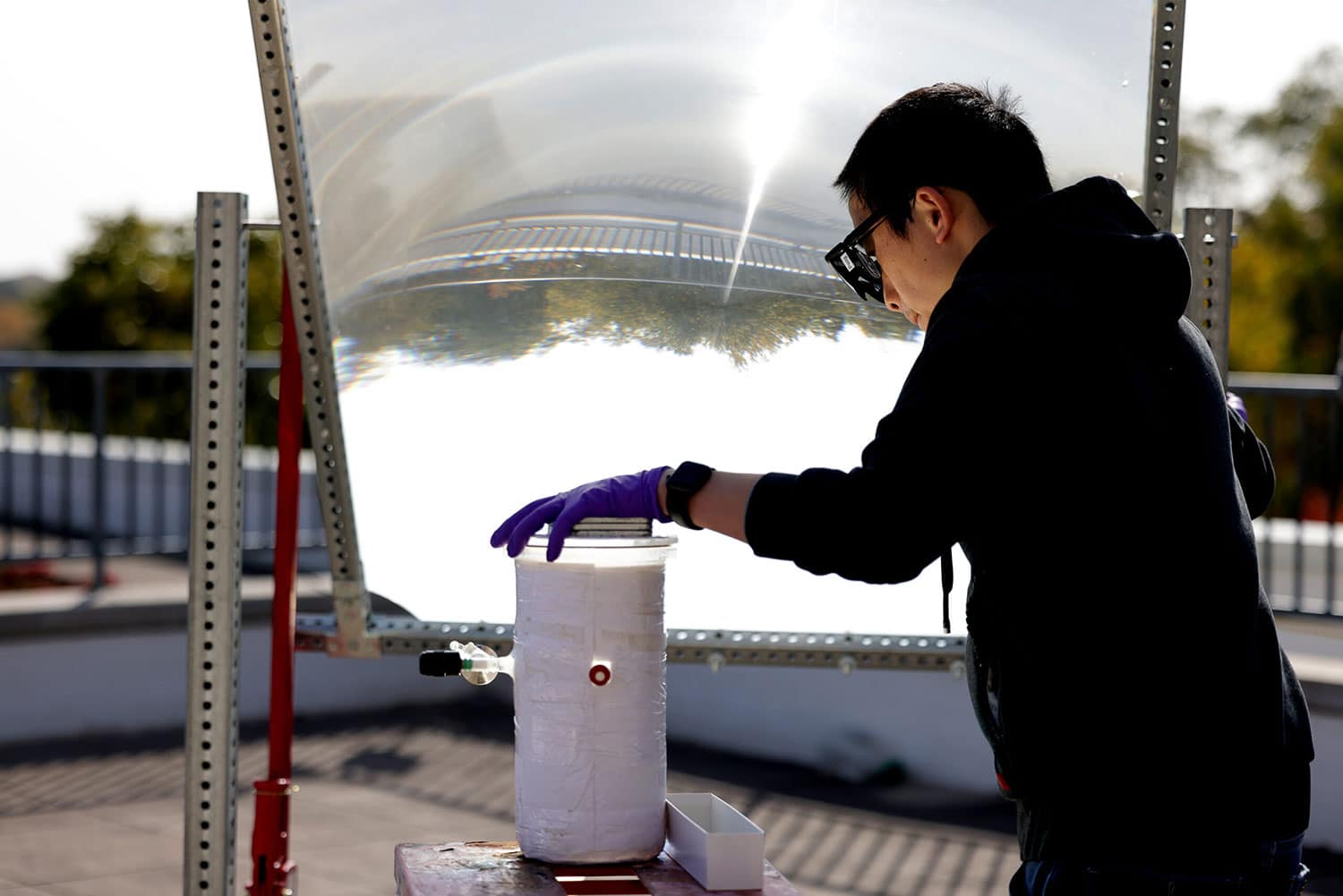
Production of hydrogen fuel from sunlight and water offers one of the most promising pathways for carbon neutrality. However, some solar hydrogen production approaches, such as photoelectrochemical water splitting, show low-performance stability and environmental sustainability. And other methods, such as photocatalytic water splitting, has very low solar-to-hydrogen (STH) efficiency.
Now, University of Michigan Engineering researchers have developed a method for improving the efficiency of Solar Water Splitting, a process that replicates photosynthesis by using the sun to separate hydrogen from water. By harvesting previously wasted infrared light, the researchers were able to accelerate the solar water splitting process, increasing the amount of hydrogen they were able to harvest.
This is a major breakthrough as it is nearly 10 times more efficient than solar water-splitting experiments of its kind. Researchers say their technology has the potential to significantly decrease the cost of sustainable hydrogen, which is attractive as both a standalone fuel and as a component in sustainable fuels made with recycled carbon dioxide.
They developed a new kind of solar panel with 9% efficiency in converting water into hydrogen and oxygen. The team was able to reduce the size of the semiconductor, typically the most expensive part of the device, by more than 100 times compared to some semiconductors only working at low light intensity. The team’s self-healing semiconductor withstands concentrated light equivalent to 160 suns.
The outstanding result comes from two advances. First is the ability to concentrate the sunlight without destroying the semiconductor that harnesses the light. And second is using both the higher energy part of the solar spectrum to split water and the lower part of the spectrum to provide heat that encourages the reaction. The magic is enabled by a semiconductor catalyst that improves itself with use and withstands the deterioration that typically occurs when they harness sunlight to drive chemical reactions.
In addition to handling high light intensities, it can thrive in high temperatures that are punitive to computer semiconductors. Higher temperatures speed up the water-splitting process, and the extra heat also encourages the hydrogen and oxygen to stay apart instead of renewing their bonds and forming water once more. Because of this, the team was able to harvest more hydrogen.
The catalyst is made of indium gallium nitride nanostructures grown onto a silicon surface. That semiconductor wafer captures the light, converting it into free electrons and positively charged holes that are left behind when the light liberates electrons. The nanostructures are peppered with nanoscale metal balls that are 1/2000th of a millimeter across and make use of the electrons and holes in the environment to drive the reaction.
To test this method, they used a large lens to concentrate sunlight onto a semiconductor submerged in a chamber full of water. The temperature in the chamber reaches a very warm 75 degrees Celsius, warm enough to help encourage the reaction while also being cool enough for the semiconductor catalyst to perform well.
The outdoor version of the experiment, with less reliable sunlight and temperature, achieved 6.1% efficiency in converting the sun’s energy into hydrogen fuel. However, indoors, the system achieved an efficiency of 9.2%.
Next, the team intends to further improve the efficiency and achieve ultrahigh purity hydrogen that can be directly fed into fuel cells.
Journal reference:
- Peng Zhou, Ishtiaque Ahmed Navid, Yongjin Ma, Yixin Xiao, Ping Wang, Zhengwei Ye, Baowen Zhou, Kai Sun and Zetian Mi. Solar-to-hydrogen efficiency of more than 9% in photocatalytic water splitting. Nature, 2023; DOI: 10.1038/s41586-022-05399-1
New, more efficient method for harvesting sustainable hydrogen
Source: Tambay News

0 Comments